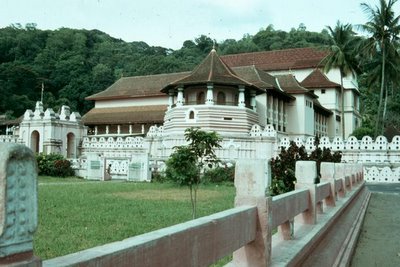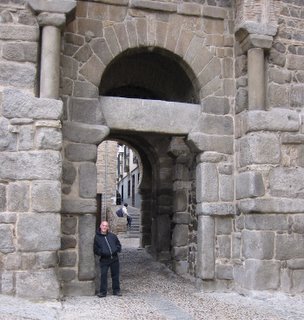 |
If you’d like to receive daily updates about great heritage sites |
Located on the banks of the River Shannon in County Offaly, Clonmacnoise is one of Ireland’s most iconic historical sites. The monastery was originally founded by Saint Ciarán in the middle of the sixth century. Unlike many of the other early Irish saints who often came from privileged families, Ciarán was the son of a carpenter. Despite his humble origins, Ciarán soon gained a reputation for his intelligence and holiness. After completing his education, Ciarán became the founder of a small monastery on Hare Island in Lough Ree, before choosing the site of Clonmacnoise to establish another monastery.
His choice of location at Clonmacnoise was incredibly shrewd. Though today it seems like a peaceful and somewhat isolated place, in the early medieval period Clonmacnoise was at the crossroads of the two major routeways of Ireland: the mighty River Shannon and the Slí Mór (meaning The Great Way) the roadway that traversed the country from east – west over the glacial eskers that offered easy passage over the wetlands and bogs of the midlands. Clonmacnoise was also situated on the borders of two of the great kingdoms of early medieval Ireland, Connacht to the west, and Mide (Meath) to the east, and the site prospered from its close relations to both of the ruling dynasties.
 |
| Clonmacnoise from the River Shannon. The Shannon was a major routeway of early medieval Ireland, and this view from the river would have been one familiar to the majority of pilgrims who visited the site. You can experience a river trip to Clonmacnoise by boat from Athlone. See http://www.vikingtoursireland.ie for more information. |
 |
| The Cross of the Scriptures (a replica, the real one is in the visitor centre) |
The earliest churches at Clonmacnoise would have initially been wooden constructions, known at the time as a dairtheach (Oak House), but as Clonmacnoise grew in power and prestige these were gradually replaced with grander buildings made from stone, often founded by Kings and nobles. In AD 909 King Flann commissioned the construction of the Cathedral and the beautiful high cross known as the Cross of the Scriptures. The cross now on display in the excellent visitor centre, bears an inscription marking the event. Not to be outdone, over the centuries more ruling dynasties like the O’Melaghlins (kings of Meath) commissioned churches at Clonmacnoise. The monastery grew wealthy as rulers and nobles clamoured to be buried within the same hallowed ground as Saint Ciarán, as it was believed that the saint would ensure entry into Heaven.
 |
The Round Tower of Clonmacnoise known as O'Rourke's Tower, named in honour of its founder. |
At its height the monastery was surrounded by a large bustling settlement, with markets, craftsmen, labourers and farm-workers. It would have been surrounded by one of early medieval Ireland's largest populations, outside of the Viking cities of Dublin, Waterford, Limerick and Cork. The growing wealth and reputation did not go unnoticed, and Clonmacnoise was raided a number of times through its history, mostly by warriors from rival Irish kingdoms like Munster, and in AD 842 and 845 by the Vikings.
As the fortunes of the once mighty kingdoms of Meath and Connacht waned following the Norman invasions, Clonmacnoise too gradually declined over the centuries. The Normans left their mark on the site by constructing Clonmacnoise Castle to ensure they controlled the strategically important crossing point of the Shannon. Despite Clonmacnoise having a brief period of resurgence in the early seventeenth century, by the mid-1600s the site had been largely abandoned. Its isolation has left us with a wonderfully atmospheric site that is a fantastic place to explore.
 |
| The round tower of Temple Finghin with the Shannon in the background |
Today Clonmacnoise is under the auspices of The Office of Public Works, and a visit to the site should be on everyone’s bucket list. Inside the visitor centre you can see the original high crosses, and a superb collection of graveslabs that give fascinating insights into life and death at Clonmacnoise. There are over 700 examples of cross slabs known to have associations with Clonmacnoise. The purpose of these slabs is thought to mark the burial place of a monk or holy man or person of prestige. The earliest slabs date to the seventh century and generally feature a simple cross design. Over the centuries, their designs develop and become more elaborate. The inscriptions on the slabs generally include the words 'poor', 'servant of', or 'tonsured one' which leads scholars to believe that the cross slabs generally mark the burial place of monks or other church figures. Other slabs feature the names of Kings and on one instance an inscription referred to ‘the most learned doctor’ so we can deduce that the slabs were also used to mark those of rank and prestige within medieval society. This cross-slab pictured here asks for:
'A Prayer for Tuathal the Craftsman'.
When you have finished exploring the main site, don't forget to follow the Pilgrim's Path for approximately 400m or so to The Nun's Church. The Annals record that the Nun's Church was completed for Derbforgaill in 1167. It is located in a field to the east of the main monastic complex and is one of the finest examples of Hiberno-Romanesque architecture in Ireland. Serpents, plants, and highly stylised animal heads are all represented on the arches of the west portal and chancel arch.
 |
| The beautiful Romanesque architecture of The Nun's Church. |
For information about entry fees and opening times to the visitor centre please visit here.
If you’d like to receive daily updates about great heritage sites then please consider following us on Facebook, Twitter and Google+.
All content & photographs © Neil Jackman /abartaheritage.ie
 |
| The beautiful 15th century north doorway into the Cathedral |


































